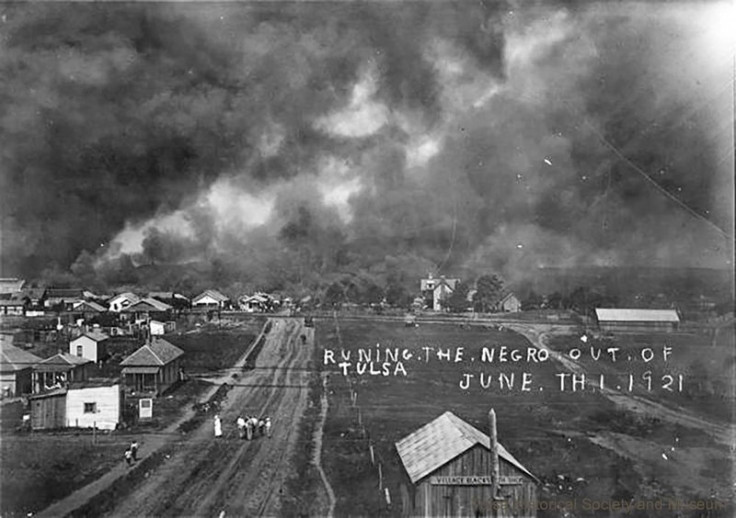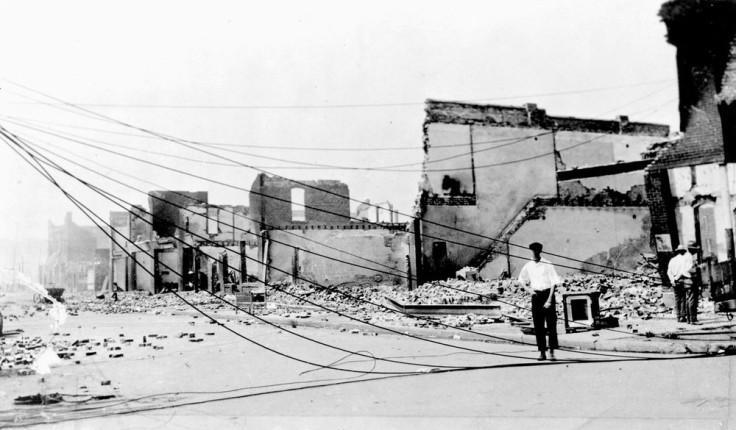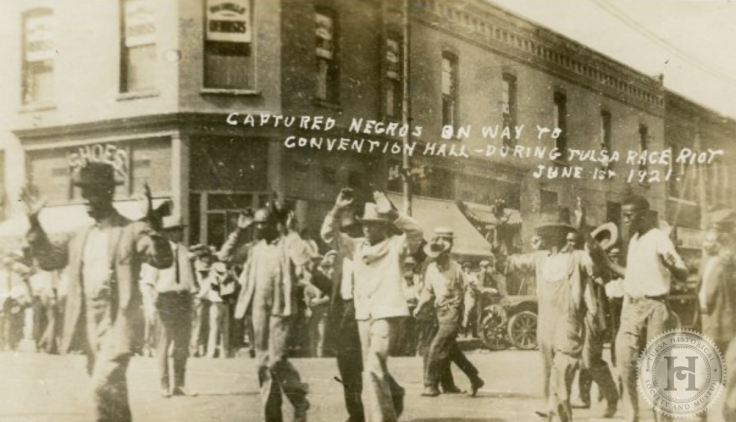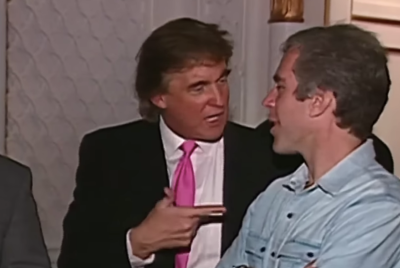Haunting Tulsa Race Massacre Photos Resurface After Oldest Survivor Dies at 111
Devastating attack on Greenwood: 35 blocks burned, over 800 injured, and a community torn apart in one of America's darkest racial violences

The oldest survivor of the 1921 Tulsa Race Massacre, Viola Ford Fletcher, has passed away at the age of 111. Her death marks a poignant moment in history, as photographs and stories of that dark chapter are brought back into public consciousness.
'Today, our city mourns the loss of Mother Viola Fletcher – a survivor of one of the darkest chapters in our city's history,' Tulsa Mayor Monroe Nichols said on social media yesterday. 'Mother Fletcher endured more than anyone should, yet she spent her life lighting a path forward with purpose. She carried 111 years of truth, resilience, and grace, and was a reminder of how far we've come and how far we still must go.'
A grandmother of six, Fletcher often reflected on the massacre. In a 2021 interview, she shared that she thought about that period of destructive anti-Black violence every day. 'It will be something I'll never forget,' she said. Her words serve as a powerful reminder of the trauma inflicted on her community.
What Sparked the Violence Between 30th May and 1st June 1921?

A young Black man named Dick Rowland was in the elevator at the Drexel Building on Third and Main with a white woman named Sarah Page on May 30th. While the details of the incident varied, the news spread rapidly among the city's white community.
Tulsa police arrested Rowland the next day, suspecting assault. An inflammatory report in the May 31st edition of the Tulsa Tribune sparked a clash between armed Black and white mobs near the courthouse, where the sheriff and his deputies set up barricades to protect Rowland.
Shots were fired, and the outnumbered African Americans began retreating to the Greenwood District. On June 1st, white rioters looted and burned Greenwood, reducing it to ash. The violence lasted less than a day but left a lasting scar. Over 300 Black residents died, more than 800 were injured, and thousands were displaced. The governor declared martial law, deployed the National Guard, and over 6,000 people were detained at the Convention Hall, some for over a week, according to the Tulsa Historical Society and Museum.

Photographic Evidence of Atrocity
The archives contain disturbing captions like 'Running the Negro out of Tulsa' and 'Herding Them in the Convention Hall.' These 100-year-old images depict white mobs standing beside dead bodies, destroyed buildings, and casually walking through the chaos as Greenwood burned.
In 2021, Fletcher testified before the House Judiciary Subcommittee on the Constitution, Civil Rights, and Civil Liberties. 'I still see Black men being shot, Black bodies lying in the street. I still smell smoke and see fire. I still see Black businesses being burned. I still hear airplanes flying overhead. I hear the screams,' she said.
Fletcher fondly recalled her childhood in Greenwood before the massacre: 'We had friends and played outside. We'd visit with neighbors and were happy there with our parents. Just loved being there.'
Despite these haunting images, Tulsa's city officials have argued they should not be liable for reparations, claiming residents today bear no responsibility for the events of 1921.
A Call for Accountability and Justice
These photographs serve as painful reminders of the lack of accountability for those involved in or who witnessed the massacre. Moving forward, Tulsa and Oklahoma should clarify how the perpetrators were protected, despite the photographic evidence. The legacy of this atrocity remains a critical part of the ongoing conversation about racial justice and reconciliation in the United States.
© Copyright IBTimes 2025. All rights reserved.




















